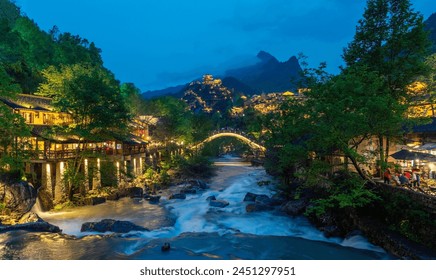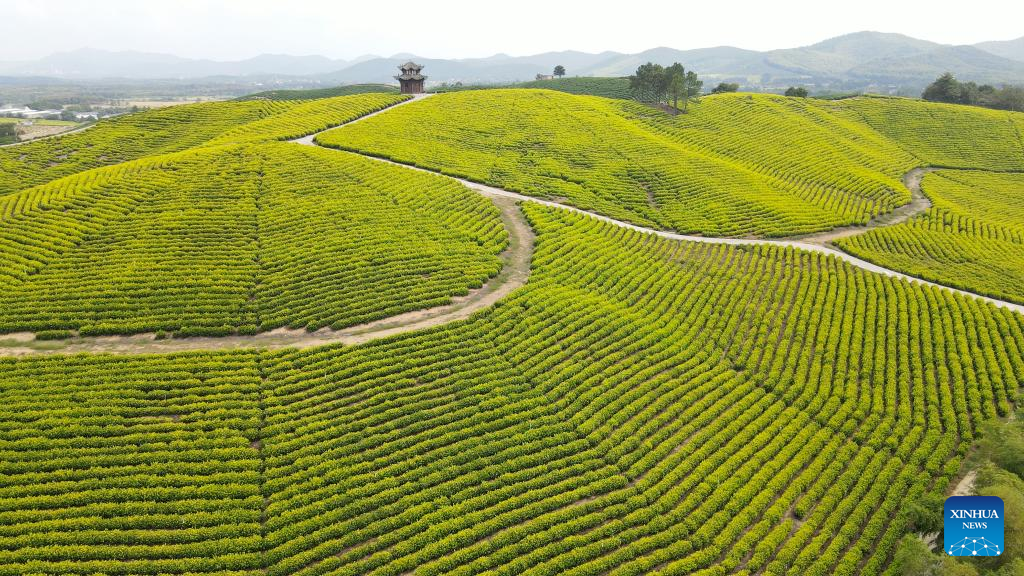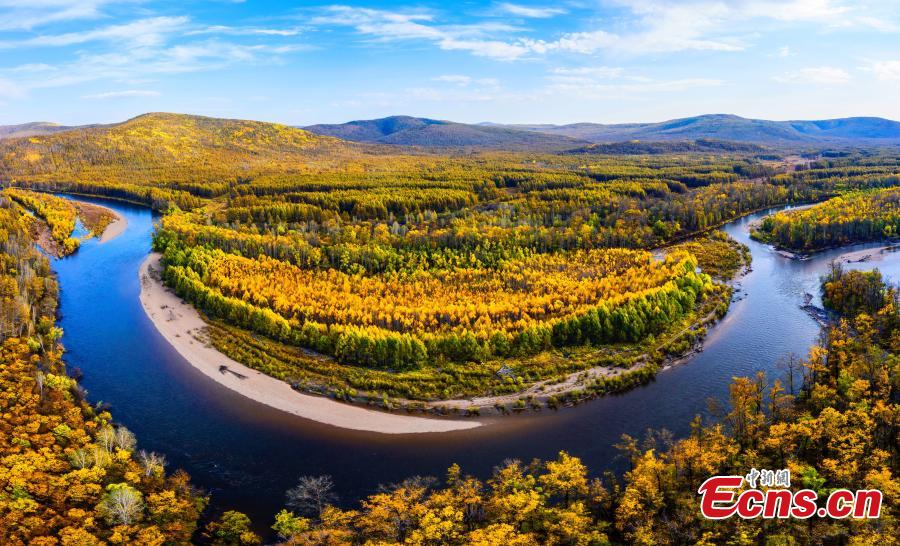Unravel the Mysteries of Angangxi Site: A Journey Through History and Culture

An Essential Guide to Visiting Angangxi_Site
Nestled in the serene landscapes of Heilongjiang Province, approximately 25 kilometers southwest of Qiqihar city, Angangxi Site (昂昂溪遗址) beckons travelers with its intriguing blend of history, culture, and natural beauty. This remarkable archaeological site, dating back to the Neolithic era, offers a rare glimpse into the lives of ancient communities that once thrived in this northern grassland. Spanning a vast area along the banks of the Nen River, Angangxi Site is home to an extensive collection of relics and artifacts, including sophisticated stone tools, pottery, and exquisite jade pieces that speak volumes about the craftsmanship of its inhabitants.
Discovered in the 1950s, this site is a testament to the rich cultural tapestry of ancient China and has been recognized as a key site for understanding the transition from hunter-gatherer societies to more complex agricultural communities. Visitors can explore various excavation sites, each revealing layers of history that contribute to our understanding of human evolution and cultural development in the region.
The Angangxi Cultural Exhibition Hall further enhances the experience, showcasing over a hundred artifacts that illuminate the daily lives, rituals, and artistic endeavors of the people who once called this area home. Whether you’re a history buff, an archaeology enthusiast, or simply a curious traveler, Angangxi Site promises an enriching journey back in time, set against the backdrop of stunning natural landscapes.
As you plan your visit, prepare to be captivated not only by the historical significance of Angangxi Site but also by the tranquil beauty of its surroundings. The combination of ancient relics and picturesque vistas makes this destination a must-see for anyone seeking to uncover the mysteries of our past while enjoying the serene ambiance of northeastern China.
In This Guide
- An Essential Guide to Visiting Angangxi_Site
- The Rich History and Legends of Angangxi_Site
- Main Highlights: What You Absolutely Can’t Miss
- Planning Your Visit: A Practical Guide
- Tickets: Prices, Booking, and Tips
- How to Get There: A Complete Transportation Guide
- Local Cuisine and Accommodation Nearby
- Frequently Asked Questions
- Final Thoughts on Your Trip
The Rich History and Legends of Angangxi_Site
Nestled in the picturesque Angangxi District of Qiqihar, the Angangxi Site (昂昂溪遗址) is a treasure trove of history, revealing the rich tapestry of life from the Neolithic age. Discovered inadvertently by a railway worker in the 1950s, this archaeological site has since become a focal point for historians and archaeologists alike, showcasing a remarkable collection of artifacts that span thousands of years.
The Angangxi Site is primarily significant for its extensive Neolithic culture, known as the Angangxi culture, which thrived around 6,000 to 7,000 years ago. It consists of 39 key locations, including 22 distinct archaeological sites and 17 artifact points, peppered throughout the region. The remnants are primarily found along the banks of the Nen River, a vital waterway that supported the livelihoods of ancient communities through fishing and hunting.
Among the most notable sites within this expansive area are the Wufu Site and Tengjiagang Site. The Wufu Site, in particular, is credited with giving the Angangxi culture its name and gained international recognition following its scientific excavation led by the renowned archaeologist Liang Siyong in the 1930s. Here, archaeologists unearthed nearly 3,000 artifacts, including intricately crafted stone tools, bone implements, pottery, and exquisite jade objects, illustrating the advanced skills and daily life of the inhabitants.
The findings from Angangxi highlight not only the predominance of fishing and hunting in the local economy but also the early development of agriculture and animal husbandry, showing a complex interplay of various subsistence strategies. The artifacts, ranging from stone arrowheads and chisels to bone fish spears and decorative jade pieces, paint a vivid picture of the cultural practices and technological innovations of the time.
Beyond its archaeological significance, the Angangxi Site is also a remarkable representation of the transition from the Paleolithic to the Neolithic era in northern China. It has been pivotal in understanding the cultural evolution of the region and has earned accolades from historians and archaeologists for its contributions to the study of ancient civilizations. The site was officially designated as a National Key Cultural Relic Protection Unit by the Chinese government in 1988, underscoring its importance in the national heritage.
For those looking to delve deeper into this fascinating history, the Angangxi Cultural Exhibition Hall offers a comprehensive overview of the site’s significance. The museum houses over 100 artifacts, focusing on the geological features, cultural practices, and scientific research of the Angangxi culture, making it an ideal stop for history enthusiasts and casual visitors alike.
Visiting the Angangxi Site allows travelers to step back in time and connect with the ancient peoples who once thrived in this lush region. With its stunning landscapes and profound historical significance, the site promises an enriching experience for anyone eager to explore the roots of human civilization in northeastern China.

Angangxi_Site.
Main Highlights: What You Absolutely Can’t Miss
When venturing into the heart of China’s ancient cultures, the Angangxi Site (昂昂溪遗址) offers an unforgettable experience steeped in history. This archaeological treasure, nestled in Heilongjiang Province near Qiqihar, serves as a window into the Neolithic era, revealing the rich tapestry of early human life and cultural development in northern China.
Key Highlights You Can’t Miss
1. Explore the Archaeological Complex
The Angangxi Site consists of a remarkable collection of 39 sites and artifact points, including the renowned Wufu and Tengjiagang sites. Stroll through the remnants of the past where archaeologists have unearthed over 3,000 artifacts, showcasing the tools, pottery, and decorative items used by ancient communities. This is one of the richest Neolithic sites in northeastern China, offering visitors a unique glimpse into the daily lives of our ancestors.
2. Visit the Angangxi Cultural Exhibition Hall
Don’t miss the on-site museum dedicated to the Angangxi culture. Spanning 84 square meters, this exhibition hall houses more than 100 artifacts, including stone tools, bone implements, and exquisite jade pieces. The displays are thoughtfully arranged to guide you through the site’s geographical features, cultural significance, and the evolution of the artifacts over time. This is a perfect stop for history buffs eager to deepen their understanding of the region’s heritage.
3. Engage with Interactive Experiences
For a hands-on experience, participate in interactive activities offered at the site. From archaeological simulation to artifact restoration demonstrations, you’ll have the chance to connect directly with the past. These immersive experiences provide a fun and educational way to appreciate the meticulous work of archaeologists and the significance of preserving such historical sites.
4. Marvel at the Surrounding Natural Beauty
The Angangxi Site is not just about history; it is set against a stunning backdrop of natural beauty. The site is located within the Angangxi Wetlands, where you can enjoy the peaceful scenery and diverse wildlife. Take a leisurely walk around the wetlands, where the interplay of nature and history creates a serene atmosphere perfect for reflection and exploration.
5. Learn About the Cultural Significance
The Angangxi Site is not merely an archaeological wonder; it plays a critical role in understanding the cultural transitions from the Paleolithic to the Neolithic and into the Bronze Age in northern China. As you explore, consider the site’s contributions to our knowledge of ancient hunting and gathering societies, their economic practices, and social structures.
6. Capture the Moment
Don’t forget to bring your camera! The combination of ancient relics and beautiful landscapes provides countless opportunities for stunning photographs. Whether it’s a close-up of a delicate jade artifact or a panoramic shot of the wetlands, the visuals here are bound to enhance your travel memories.
7. Plan Your Visit
The Angangxi Site is accessible year-round, with the best visiting times in spring and autumn when the weather is mild. Allocate approximately 2-3 hours for your visit to fully appreciate the exhibitions and engage with the interactive experiences. The site is conveniently located about 25 kilometers southwest of Qiqihar city, making it an easy addition to your travel itinerary in the region.
As you explore the Angangxi Site, you’ll find that it is not just a destination but a journey through time, connecting you to the ancient cultures that once thrived in this vibrant area. Embrace the opportunity to learn, explore, and reflect on the foundations of human civilization.

Angangxi_Site.
Planning Your Visit: A Practical Guide
Visiting the Angangxi Site offers a unique glimpse into China’s rich prehistoric past, particularly significant for enthusiasts of archaeology and ancient cultures. Nestled in the scenic landscape of Heilongjiang Province, this site is an archaeological treasure trove that showcases artifacts from the Neolithic era. Whether you’re a history buff, a student of anthropology, or simply a curious traveler, preparing for your visit can enhance your experience. Here’s everything you need to know to make the most of your trip to the Angangxi Site.
Getting There
Location: The Angangxi Site is located in Angangxi District, approximately 25 kilometers southwest of Qiqihar city.
Transportation:
– By Public Transport: Take bus route 303 from downtown Qiqihar directly to Angangxi. The journey is economical and offers a chance to mingle with locals.
– By Car: If you prefer a more flexible schedule, consider renting a car. The drive from Qiqihar to the site takes about 30 minutes via the G111 highway.
– Taxis and Ride-Sharing: Taxis are available throughout Qiqihar; just ensure the driver understands your destination. Ride-sharing apps may also operate in the area.
Opening Hours and Tickets
Museum Hours: The Angangxi Site Museum is open from Tuesday to Sunday, 8:30 AM to 4:00 PM, and closed on Mondays.
Admission Fees: The ticket prices are reasonable, with discounts available for students and seniors. It’s advisable to check online or with local tourist offices for current ticket prices before your visit.
What to Expect
The Angangxi Site encompasses a series of archaeological remains that span over 6,000 years, including significant findings like stone tools, pottery, and bone artifacts. Here’s a glimpse of what you can explore:
- Exhibition Halls: The museum showcases over 3,000 artifacts, including finely crafted stone tools, exquisite jade pieces, and pottery that reveal the everyday lives of the ancient inhabitants.
- Interactive Experiences: Engage with history through simulated archaeological digs and restoration workshops, allowing for a hands-on understanding of the ancient cultures.
- Cultural Significance: Learn about the Angangxi culture, which thrived on fishing, hunting, and early agricultural practices—offering a fascinating insight into the lifestyles of ancient peoples in northern China.
Suggested Duration
Plan to spend 2 to 3 hours at the site to fully appreciate the exhibits and participate in interactive sessions. This timeframe allows for a leisurely exploration of both the museum and the surrounding area.
Nearby Attractions
While in the area, consider visiting these attractions to round out your experience:
– Rosia Street: A charming street lined with Russian-style architecture, showcasing the cultural fusion in this region.
– Longsha Park: Enjoy a stroll or a picnic in this beautiful park, perfect for relaxing after a day of exploration.
– Zhalong Nature Reserve: If time permits, this nearby reserve is famous for its diverse birdlife and stunning natural landscapes.
Practical Tips
- Weather: The region experiences distinct seasons. Check the weather forecast before your visit and dress accordingly, especially during the colder months.
- Local Cuisine: Don’t miss trying local delicacies. Look for restaurants near the museum that serve traditional dishes; they offer a taste of the local culture.
- Language: While some signage is in English, learning a few basic Mandarin phrases can enhance your interactions with locals.
Conclusion
A trip to the Angangxi Site is not just a visit to a museum; it’s an opportunity to step back in time and connect with the ancient roots of northern China. By planning your visit thoughtfully, you’ll ensure a rewarding experience steeped in history, culture, and discovery. Enjoy your adventure into the past!

Angangxi_Site.
Tickets: Prices, Booking, and Tips
When planning your visit to the Angangxi Site (昂昂溪遗址), it’s essential to be well-informed about ticket prices, booking procedures, and helpful tips to enhance your experience. This archaeological site, rich in history and culture, offers an enchanting glimpse into China’s Neolithic past, making it a must-see for any traveler.
Ticket Prices
As of 2025, the entrance fee for the Angangxi Site is quite affordable, typically around 50 CNY (approximately 7 USD) for adults. Discounts are often available for students and senior citizens, so be sure to bring appropriate identification to take advantage of these savings. Entry to the museum located on-site, which showcases artifacts from the excavation, is usually included in the ticket price.
Booking Your Tickets
Tickets can be purchased directly at the entrance of the site. However, to ensure a hassle-free visit, especially during peak tourist seasons, consider booking in advance through travel apps or websites such as Trip.com or local travel agencies. Many platforms offer special deals and packages that may include guided tours.
Opening Hours
The Angangxi Site is open to visitors from 9:00 AM to 5:00 PM. It’s worth noting that the site is closed on Mondays, so plan your visit accordingly. To fully appreciate the historical significance and the exhibits, it’s advisable to allocate 2-3 hours for your exploration.
Getting There
The site is conveniently located approximately 25 kilometers southwest of Qiqihar City. You can reach it by public transport or taxi from the city center. If you prefer driving, the site is easily accessible via the G111 highway. Look for local buses that operate regular routes to the Angangxi area, making it budget-friendly for travelers.
Tips for Your Visit
- Dress Comfortably: Wear comfortable shoes and clothing, as you’ll likely be walking on uneven terrain and exploring outdoor areas.
- Bring Water and Snacks: While there are some facilities nearby, it’s a good idea to carry water and light snacks, especially if you plan to spend an extended time at the site.
- Engage with Guides: If you have the chance, consider hiring a local guide. Their insights can greatly enrich your understanding of the site’s history and significance.
- Visit the Museum: Don’t miss the on-site museum, which houses artifacts that date back thousands of years. It provides context and depth to what you’ll see at the archaeological site.
- Photography: Capture the beauty of the site, but be mindful of any restrictions regarding photography in certain areas, particularly inside the museum.
By preparing in advance and following these tips, your visit to the Angangxi Site will surely be a rewarding and memorable experience. Embrace the opportunity to step back in time and explore the rich tapestry of history that this remarkable site has to offer!
How to Get There: A Complete Transportation Guide
Reaching the Angangxi Site, a remarkable archaeological treasure located in the Heilongjiang province of China, is an adventure in itself. This guide will help you navigate your journey to this historical site with ease.
Getting to Angangxi Site
By Air
The nearest major airport to Angangxi Site is Qiqihar Sanjiazi Airport (NDG), located approximately 40 kilometers (about 25 miles) away from the site. Various domestic flights connect this airport to major Chinese cities like Beijing, Shanghai, and Harbin.
From the Airport:
– Taxi: The quickest way to reach the site is by taking a taxi from the airport directly to Angangxi. Expect the journey to take about 45 minutes.
– Shuttle Service: Check if your hotel provides airport transfers. Some local travel agencies also offer shuttle services to popular tourist destinations.
By Train
Qiqihar is also well-connected by rail, making it a convenient option for travelers coming from other cities in China. The Qiqihar Railway Station is the main station, with frequent services running to and from major cities.
From the Train Station:
– Taxi: Taxis are readily available outside the station, and a ride to Angangxi Site will take around 30 minutes.
– Public Bus: If you are looking for a more economical option, take bus routes that head towards Angangxi District. Buses run regularly, but be sure to check the latest schedules.
By Bus
If you’re traveling from nearby cities or provinces, long-distance buses are available to Qiqihar. The Qiqihar Long-Distance Bus Station serves as the hub for intercity travel.
From the Bus Station:
– Similar to the train station, you can take a taxi or a local bus to reach Angangxi Site. The taxi ride will take about 30 minutes, while local buses may take longer depending on stops.
By Car
For travelers who prefer to drive, renting a car is a viable option. The site is accessible via the G111 National Highway, which connects various cities in the region.
Driving Directions:
– From Qiqihar city center, head south on the G111 towards Angangxi District. Follow signs for the site, which is approximately a 30-minute drive.
Local Transportation
Once at Angangxi, you might want to explore the area or visit the nearby Angangxi Cultural Exhibition Hall. Here are a few local transportation options:
- Bicycles: Renting a bicycle is a great way to explore the scenic beauty surrounding the site.
- Walking: The area around Angangxi Site is pedestrian-friendly, making it easy to explore on foot.
- Taxis: Local taxis are available if you need to travel to further locations or nearby attractions.
Tips for Travelers
- Language: English may not be widely spoken, so consider downloading a translation app or learning a few basic phrases in Mandarin.
- Cash: While major cities may accept cards, it’s advisable to carry cash, especially when traveling to rural areas.
- Best Time to Visit: The site is open year-round, but spring and autumn offer the most pleasant weather for exploration.
With this guide, your journey to the Angangxi Site can be smooth and enjoyable, allowing you to immerse yourself in the rich history and culture of this fascinating location. Safe travels!

Angangxi_Site.
Local Cuisine and Accommodation Nearby
When visiting the Angangxi Site, a treasure trove of ancient history nestled in the scenic landscape of Qi Qi Ha Er, indulging in the local cuisine and finding a comfortable place to stay will undoubtedly enhance your travel experience. Here’s a guide to some delightful culinary options and cozy accommodations in the vicinity.
Local Cuisine
-
Jiang Bian Ren Jia Fish Restaurant
Located just a short drive from the site, this restaurant specializes in fresh fish dishes, showcasing the region’s rich aquatic resources. The signature dish, braised fish with local spices, is a must-try for seafood lovers seeking an authentic taste of the area. -
Si Ge Na Shou Cai (Four Special Dishes)
Known for its delectable Northeast Chinese cuisine, this establishment offers hearty meals that reflect the local flavors. From savory dumplings to fragrant stews, the menu promises to satisfy every palate. -
Hao Dong Dong Fast Food
If you’re looking for something quick yet authentic, this fast-food joint serves up local favorites like fried rice and stir-fried vegetables. It’s an ideal spot for a casual meal before heading back to your accommodation. -
Dongbei Cuisine at Wang’s Family Restaurant
A little further from the site, but well worth the visit, this restaurant is famed for its traditional Dongbei (Northeastern) dishes. Their signature hot pot, filled with seasonal vegetables and local meats, is perfect for sharing.
Accommodation
-
Home Inn Qi Qi Ha Er Zhonghuan Plaza
This budget-friendly hotel offers comfortable rooms with modern amenities. Located just a short distance from the Angangxi Site, it provides easy access to both the historical site and local dining options. Guests appreciate the clean environment and friendly staff. -
Four Seasons Maple Hotel
For those seeking a touch of luxury, this hotel features elegant rooms and excellent service. With amenities like a spa and fitness center, it’s perfect for travelers who want to unwind after a day of exploration. Its prime location allows for quick access to the site and surrounding attractions. -
Fengdu Hotel
A favorite among travelers, Fengdu Hotel combines comfort with affordability. The spacious rooms are well-appointed, and the hotel is conveniently located near public transportation, making it easy to navigate the area. -
Huamei International Hotel
If you’re looking for a more upscale experience, consider the Huamei International Hotel. It features stylish decor, a variety of dining options, and facilities for business travelers. The hotel’s attentive staff and prime location make it an excellent choice for both leisure and business trips.
Final Thoughts
Exploring the Angangxi Site offers a fascinating glimpse into ancient Chinese civilization, and pairing that experience with the region’s culinary delights and comfortable accommodations will make your visit truly memorable. Whether you’re sampling local dishes or relaxing in a cozy hotel, the essence of Qi Qi Ha Er will surely leave a lasting impression.

Angangxi_Site.
Frequently Asked Questions
Frequently Asked Questions about Angangxi Site (昂昂溪遗址)
1. Where is the Angangxi Site located?
The Angangxi Site is situated approximately 25 kilometers southwest of Qiqihar City in Heilongjiang Province, China. It lies on the left bank of the Nen River, within the Angangxi District.
2. What are the main archaeological features of the Angangxi Site?
The site consists of a cluster of 22 archaeological sites and 17 artifact points, totaling 39 locations. Key sites include Wufu, Tengjiagang, and Huotouqi, which feature a rich collection of stone tools, pottery, and jade artifacts, indicating a thriving Neolithic culture centered around hunting and fishing.
3. What is the significance of the Angangxi culture?
The Angangxi culture, dating back 6,000 to 7,000 years, is critical for understanding the transition from the Paleolithic to the Neolithic era in northern China. It showcases a diverse economy that included hunting, fishing, animal husbandry, and early agriculture, making it a cornerstone of northern Chinese archaeological studies.
4. Are there any visitor facilities at the site?
Yes, the Angangxi Site features a cultural exhibition hall that spans 84 square meters. The hall displays over 100 artifacts, including stone tools, bone implements, and pottery, providing insights into the Angangxi culture and its historical context.
5. What are the opening hours for the Angangxi Site?
The site is open to visitors from Thursday to Tuesday, from 9:00 AM to 5:00 PM. It’s advisable to check for any schedule changes before your visit.
6. How can I get to the Angangxi Site?
You can reach the site by taking a bus from Qiqihar City. The bus route typically includes stops at various points in the city, and you can also consider driving, with clear signage leading to the site.
7. Is there an entry fee to visit the Angangxi Site?
Yes, there is a nominal entry fee for visiting the site, which helps support the preservation and maintenance of the archaeological sites and facilities. Discounts may be available for students and seniors.
8. How much time should I allocate for my visit?
A visit to the Angangxi Site typically takes about 1 to 2 hours. This duration allows sufficient time for exploring the exhibition hall and enjoying the surrounding natural scenery, making it a delightful half-day excursion.
Final Thoughts on Your Trip
As you wrap up your journey through the captivating Angangxi Site, take a moment to reflect on the profound history that echoes through its ancient grounds. This remarkable archaeological site, rich in artifacts from the Neolithic era, offers a unique glimpse into the lives of early civilizations that once thrived along the banks of the Nen River. From intricately crafted stone tools to exquisite jade pieces, each exhibit tells a story of human ingenuity and resilience.
Exploring the Angangxi Site is not just a journey through time; it’s an invitation to connect with the past and appreciate the cultural heritage that has shaped the region. The adjacent museum enhances this experience, providing a deeper understanding of the artifacts and the people behind them.
As you leave, carry with you the memories of this historical treasure, and perhaps a newfound curiosity to explore more about the ancient cultures that continue to influence our present. Whether you are a history buff, an avid traveler, or just someone seeking an off-the-beaten-path adventure, Angangxi has something to inspire all who visit. Safe travels on your next adventure, and may your journeys be filled with discovery and wonder!